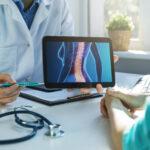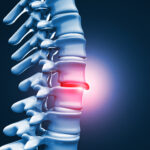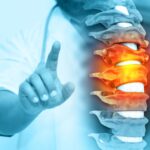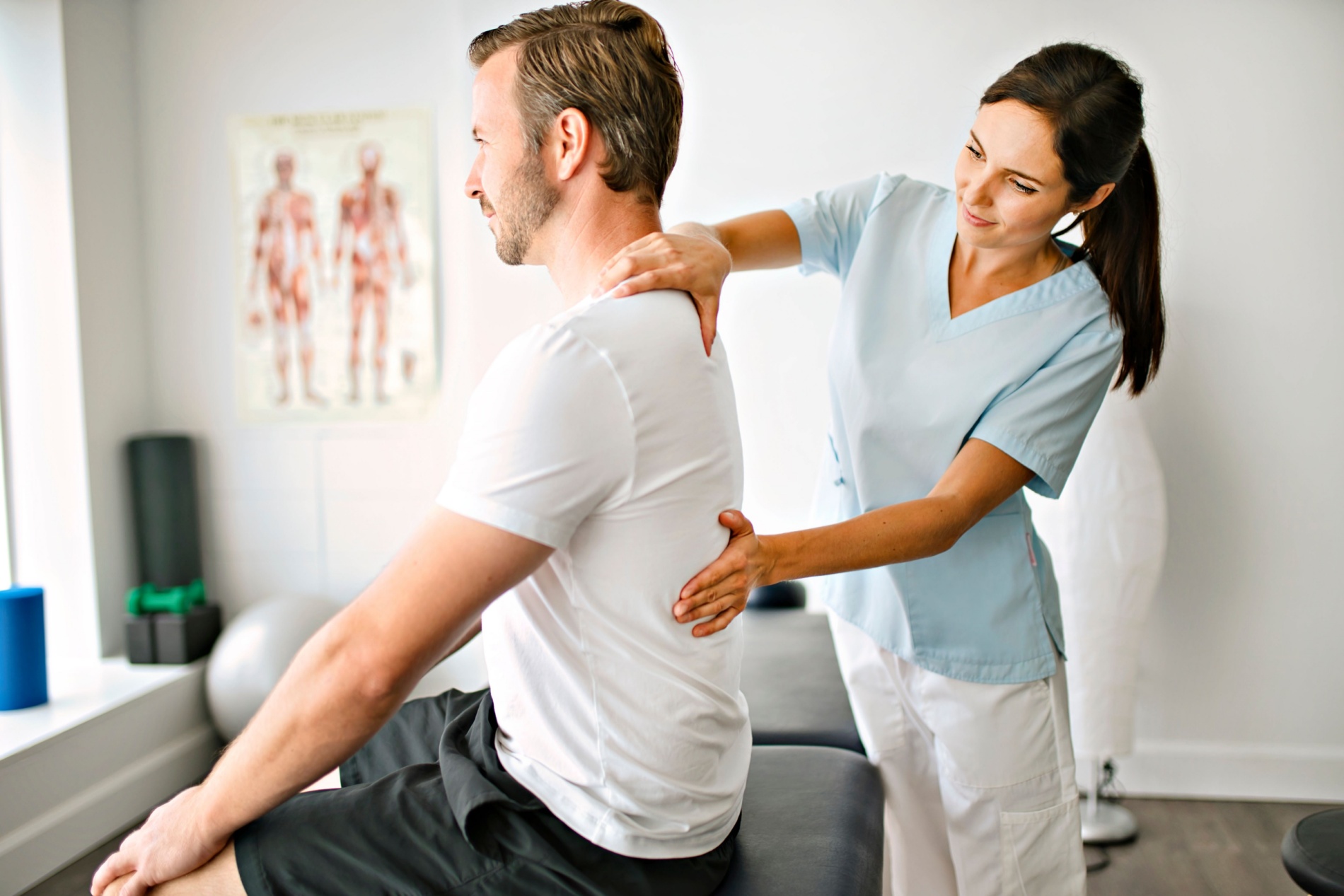
Lumbar Herniated Disc
Diagnosis
Diagnosing a herniated nucleus pulposus begins with a complete history of the problem and a physical exam. Diagnostic testing is often used as well. These can include X-rays, MRI, and CT Scans.
Causes
A true herniated nucleus pulposus is most common in young and middle-aged adults. It rarely occurs in children. Degenerative changes in the spine that occur with aging actually make it less likely to develop a true herniated disc. This is because the nucleus in the middle of the disc dries out, making it less likely to squeeze out of the disc.
Discs can rupture suddenly because of too much pressure all at once. For example, falling from a ladder and landing in a sitting position can cause a great amount of force through the spine. If the force is strong enough, either a vertebra can break or a disc can rupture. Bending places high forces on the discs between each vertebra. If you bend and try to lift something that is too heavy, the force can cause a disc to rupture.
Discs can also rupture from a small amount of force, usually due to weakening of the annulus from repeated injuries that add up over time. As the annulus becomes weaker, at some point lifting or bending causes too much pressure across the disc. The weakened disc ruptures while doing something that five years earlier would not have caused a problem.
A herniated disc causes problems in two ways. First, the material that has ruptured into the spinal canal from the nucleus pulposus can cause pressure on the nerves in the spinal canal. There is also some evidence that the nucleus pulposus material causes a chemical irritation of the nerve roots. Both the pressure on the nerve root and the chemical irritation can lead to problems with how the nerve root functions. The combination of the two can cause pain, weakness, and numbness in the area of the body to which the nerve supplies sensation.
Symptoms
The symptoms of a true herniated disc may not include back pain at all. The symptoms come from pressure on, and irritation of, the nerves. But many people do have back pain because they have other problems in their back when the disc ruptures. The symptoms of a herniated disc depend on which particular disc is effected and usually include:
- Pain that travels into the legs or arms
- Numbness or tingling in areas of the leg or arm
- Muscle weakness in certain muscles of the affected leg or arm
- Loss of the reflexes in the affected leg or arm
Where these symptoms occur depends on which nerve(s) has been affected in the spine. Therefore, the location of the symptoms helps determine your diagnosis. Knowing where the pain is perceived gives your doctor a better idea of which disc has probably ruptured.


Treatment
The treatment of a herniated disc depends on the symptoms. If the symptoms are getting better, your doctor may suggest watching and waiting to see if they go away. If they are getting steadily worse, your doctor may be more likely to suggest an injection of corticosteroid and in rare instances surgery. Many people who initially have problems due to a herniated disc find their symptoms completely resolve over several weeks or months.
Treatment can include observation, pain medication, rest, physical therapy, epidural steroid injections (ESI). Surgical treatment for a herniated disc depends on several factors and can include; laminectomy and discectomy, and Minimally Invasive Spine Surgery (MISS).
Book an appointment
"*" indicates required fields










